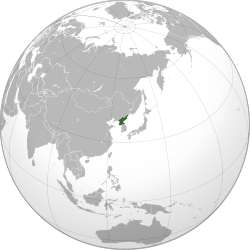North Korea’s Information Age Missile Diplomacy – Analysis
By RSIS
Pyongyang’s failed satellite launch has been condemned as yet another provocation. But there is another side to this.
By Nah Liang Tuang and Alan Chong
THE RECENT failed missile test was the fifth one conducted by North Korea, but it was one laden with much more significance than most observers have acknowledged. The regime in Pyongyang attempted some diplomatic savvy by inviting journalists into the missile base and control centre for briefings. Clearly, the intention was to sell the standard propaganda that any missile launches are a peaceful sovereign right of the country.
But what was different this time, was the guided tour itself and the opportunity for foreign cameras to record pictures to accompany the speeches and briefings. Yet according to exchanges between a US State Department spokesperson and several journalists on 9 April, the former dismissed the value of these gestures as being peripheral to the real issue of whether North Korea was violating UN Security Council Resolution 1874 which bans anything resembling ballistic missile testing by the country. While the official line from Washington was to snub Pyongyang’s explanations, one journalist boldly suggested that the propaganda did at least try to depict the missile launch as a genuine satellite venture for non-military purposes.
Information Age missile diplomacy

The North Korean missile launch ought to be seen as an attempt to reconcile Pyongyang’s well-known routine of bolstering its domestic legitimacy through headline -grabbing martial-spirited technological spectacles with an information age sensitivity. The fact that press briefings were conducted in a more sophisticated tour-and-show pattern showed that the North Korean regime did care about its image abroad. A specially commissioned train was provided for a cast of international journalists, including a team from Singapore’s Channel News Asia, for a five-hour ride from the capital Pyongyang, through swathes of farmland and natural scenery to the missile launch centre at Tongchang-ri.
Journalists were able to capture a visual narrative that ran a thread through the peaceful pursuit of agriculture, a textile factory with earnest-looking workers, to the grand statement of technological prowess under the shadow of the missile launch tower. To complete the picture of striving for a normal path of technological evolution, journalists could photograph the schooldesk-sized satellite sitting in the hangar and take in an overview of the space command centre in Tongchang-ri.
To top it all off, North Korean officials gave interviews on-site. Of course, one could sneer at the superficiality of yet another staid North Korean propaganda production. It cannot help but remind the casual observer of the now-hackneyed images of massed ranks of impeccable goose-stepping soldiers and synchronised graceful dancers dressed in the Korean traditional hanbok.
Information Age credibility…and pragmatism
But when one reflects on the range of meanings that may lie behind the spectacle of prefacing the launch with an elaborate, even if contrived, storyline, North Korea becomes less of a land of menace and mystery. Given the ‘Ascendant Prince’ Kim Jong Un’s purported progress in securing his domestic legitimacy as the true heir to the ‘Eternal President’ (Grandfather Kim Il Sung) and the ‘Eternal General Secretary’ (Father Kim Jong Il), this is potentially as close as one might get under existing circumstances to a hint of an olive branch to the world from the new leadership.
It shows that Pyongyang is aware that in an era where coverage by CNN, BBC, Al-Jazeera and other global television operators carry latent power to predetermine enmity and amity between governments, and most certainly between citizenries, image matters. And a good credible image matters all the more if North Korea is to make good on its dire domestic needs.
In this regard, it may well be that in the struggle to consolidate his authority within the country’s autocratic political system, Kim Jong Un’s circle needs to burnish his instrumental legitimacy in terms of a bridge between the aggressive tones of his predecessors, and hopefully, a newer, more pragmatic mode featuring more prominently economic development.
Launch Propaganda
Given the precedents for demonstrating technologically-derived legitimacy through rockets, artillery barrages, naval confrontations and nuclear testing, it is no surprise that Kim Jong Un’s consolidation of authority needs to be prefaced with a literally spectacular bang. Never mind if it fizzled out – and had to be admitted as a malfunction – it was still a statement of achievement. A good media headline showcasing that this was some form of indigenously synthesised high technology able to scare enemies through its virtual impact would be sufficient.
For domestic consumption, a well-timed military parade on the Sunday following the missile failure conveyed that the ‘military first’ policy of Kim Jong Un’s predecessors was still in play. It also did not go unnoticed by military observers that this parade unveiled a new long-range ballistic missile with a range of 6,000 km. These cannot be dismissed as mere inconsistencies of image. After all, previous modernising autocratic states such as Maoist China and early Gorbachev-era Soviet Union had to maintain a shrill propaganda front even while the diplomatic currents behind the scenes suggested a diplomatic and economic spring with the international community was being fostered.
As is the case with so much of Pyongyang’s behaviour in the past 20 years, one can only try to read the propaganda of transition with an unprejudiced eye, but there is always hope that the leaders in Pyongyang may yet be learning and practising change in incremental steps without trumpeting it.
Nah Liang Tuang is an Associate Research Fellow at the S. Rajaratnam School of International Studies (RSIS), Nanyang Technological University. Alan Chong is Associate Professor of International Relations at RSIS.
